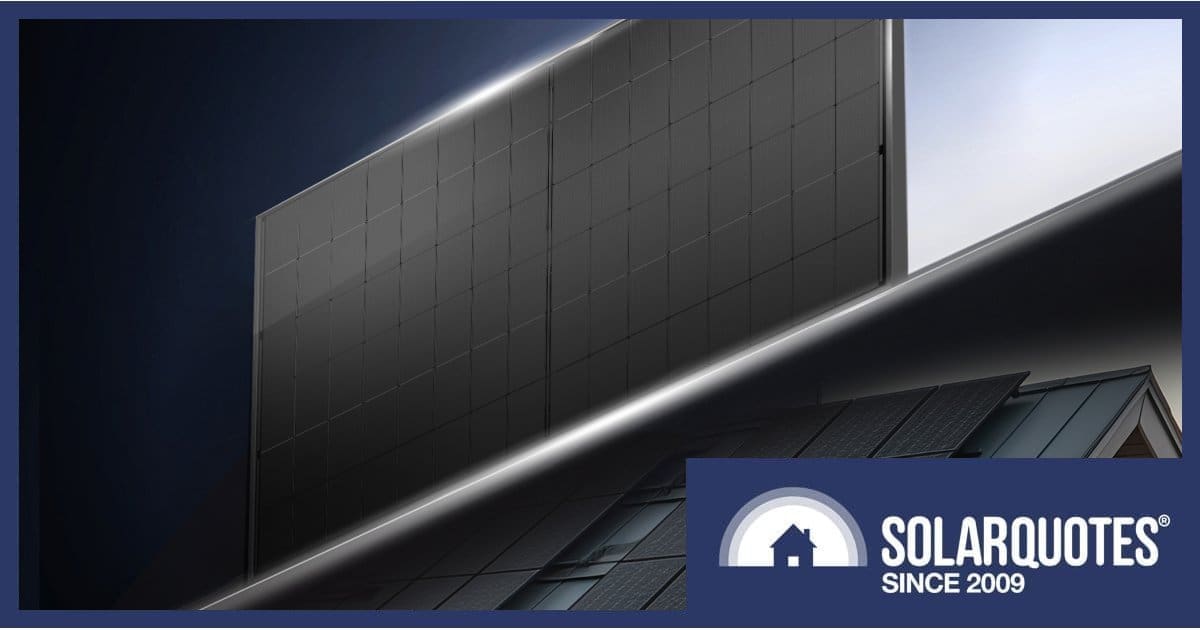JinkoSolar last week announced the launch of a new generation of solar panels, the Tiger Neo 3.0, with a residential product line up to 495 Watts.
Based on N-type and TOPCon technology, two series will be available – the Neo Utility for commercial and large-scale applications, and the Neo DG for residential rooftops.
While light on detail in the announcement, the Neo DG 495-watt panel has a conversion efficiency of 24.8% according to Jinko. That’s very impressive – higher than any module we currently have listed on the SolarQuotes solar panel comparison table.
The Neo DG will be accompanied by a 25-year product warranty and a 30-year linear power output warranty; with first year degradation of 1% maximum and an annual linear degradation rate of 0.4%.
How Big And Heavy Is It?
Something that will be of particular interest (and concern) to installers is the Neo DG panel’s dimensions – but a datasheet hasn’t been released by JinkoSolar yet as far as I know.
As modules have become more powerful, they’ve grown in size. Many high-wattage residential modules are bumping up against 2m2 these days. It wasn’t that long ago 1.6m2 was very common.
I spend as little time as possible on our rooftop – and usually without carrying anything. I can only imagine how challenging it is to stay upright in breezy conditions carrying what is essentially a 21kg+ 2m2 kite, let alone actually doing anything with it. It’s little wonder then that number one on SQ’s Anthony’s installer wishlist is manageable solar panel sizes. According to Anthony’s informal survey of installers, the most popular size for solar panels is 1650 x 992mm, less than 18kg, and preferably with a 35 or 40mm frame depth.
Still, every cloud has a silver lining as they say:
“The one saving grace of 2-metre solar panels was that it was easier to hand one up from the ground to your comrade on the roof, but there was a weight penalty to pay,” says Anthony. “No matter the size, we often slid them up a ladder.”
Regarding the Tiger Neo 3.0, Jinko says:
“Over 120 GW track record of Tiger Neo solar panels was proven to maximize power production and energy savings for customers,” states the firm. “Enabled by the TOPCon technology, JinkoSolar will continue building on its strong leadership position and raising the bar by introducing the highest-power products faster.”
Hopefully the company hasn’t also raised the size above 2m2 for the new Neo DG, and the claimed efficiency suggests Jinko hasn’t.
Prior to the 3.0 family, the most powerful Tiger Neo for home rooftops I found under 2m2 was the 460-Watt 54HL4R-(V), which is 1762 × 1134 mm, has 23% efficiency and weighs 21kg. The next Tiger Neo solar panel line offering more power was the 60HL4-(V) range at up to 500 Watts, with dimensions of 1906 × 1134 × 30 mm (around 2.16m2), and weighing 22.5kg – so outside what would be generally considered a residential module in terms of size.
Tiger Neo 3.0 DG Pricing?
There’s no indication yet of what the JinkoSolar Tiger Neo 3.0 DG will cost here in Australia. But to this point, Tiger Neo solar panels have been priced at the budget end of the spectrum. For example, a 475-Watt 60HL4 has an estimated retail price of just $135 a pop according to the SQ comparison table; which is incredibly low.
While Chinese solar manufacturers have been engaged in a particularly brutal pricing war, there are some signs this may be changing. JinkoSolar’s CEO commented a few months ago:
“Oversupply and increasingly irrational low prices along the supply chain that have plagued our industry for some time have started to be addressed by market forces as well as government and industry control policies.”
And just on that, JinkoSolar will be releasing its Q3 2024 results in a couple of days, so it will be interesting to see how the company fared.
While very budget-friendly, Jinko solar panels are of good quality, well-supported in Australia and the company is currently listed on SQ’s recommended solar panel brands chart.


 RSS - Posts
RSS - Posts



What’s worse is, it’s hard to even get the 1700 x 900 panels any more quite a problem for those with a small roof that can’t that can’t fit the bigger ones and also have a 24 V system that can’t utilise the extra voltage of the bigger panels.and also have a 24 V system that can’t utilise the extra voltage of the bigger panels making a waste
I really like Jinko as an installer because of their quality
I think the headline should be changed to “New Jinko Tiger Neo Solar Panel annouced – No details available” – that would have saved me reading the story that told me nothing.